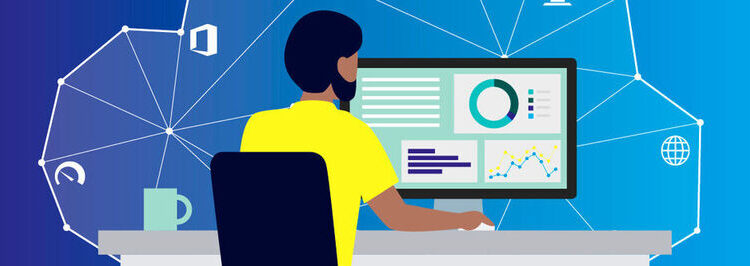How are remote work and the cloud changing monitoring? IT infrastructure monitoring: broad vs. deep analyses
01.02.2022A guest post by Stephan Wohlfelder
Many companies want to offer their employees maximum flexibility today and in the future and therefore also enable access to systems in the company from home. In addition to the work itself, the increase in home office also affects monitoring. It is therefore important to adapt the monitoring concept to the new situation. The focus should be on VPN and bandwidth utilization, WAN monitoring and, in general, comprehensive monitoring of all relevant components.
Related companies
When monitoring, the question often arises as to whether one should choose a broad or a deep approach.
(Photo by Paessler)
Flexibility and location independence not only change the components to be monitored. They also change the monitoring workflow. Data must always be visible to the IT administrator, regardless of time and place – be it via smartphone, tablet or smart watch. In addition to the classic web interface, mobile apps are therefore increasingly in the focus.
Cloud services have gained massively in importance in recent years – a trend that has been reinforced by the pandemic. Basically, modern monitoring must be able to monitor cloud-based services, such as Office 365. Nevertheless, the classic local infrastructure still plays an important role for most companies. This means that this must be taken into account and appropriately included as part of a comprehensive monitoring concept.
Monitoring analysis: broad vs. deep
Depending on the individual monitoring requirements, companies opt for either a broad or a deep monitoring approach. Basically, the following applies: the broader the responsibility, the more important it is to have a monitoring concept that is as broad as possible. Modern, broadly based monitoring concepts are not only able to monitor the entire IT system. For example, they also include environmental parameters that can have an impact on the infrastructure. They can recognize recurring patterns in various areas of IT and thus discover connections between, for example, traffic, storage and infrastructure.
However, in highly specialized areas such as development and IT operations (DevOps), broad-based concepts quickly reach their limits. Then it is advisable to use a correspondingly specialized, i.e. “deep” monitoring solution – for example, for the analysis of traffic data using NetFlow. Often, in-depth analyses also include additional management functions such as active traffic control based on the analysis made. Such deep solutions are complex and only suitable for very limited areas of application. Therefore, many companies use several different monitoring solutions from different manufacturers. In this case, however, the data does not converge, silos are created and a central overview is missing.
In summary, one can say: A broad approach monitoring is particularly suitable for detecting failures and problems and alerting them accordingly, so that a timely response can be provided. In-depth tools are provided by specialists deep insights and help with error analysis and long-term IT optimization.
How do you find the right monitoring concept?
For many IT experts, monitoring is still a marginal issue. In addition, the market is relatively confusing. That is why it is important to think about the general requirements for the solution in advance: what should the monitoring look like? What information do I want to collect?
In the second step, companies should then request trial versions from different manufacturers and test them over a certain period of time. For larger implementations, it is advisable to bring a monitoring expert on board.
What does a monitoring solution have to meet today?
A suitable monitoring solution should be able to collect and store data on availability and performance.
The tool must trigger alarms when defined threshold values are exceeded and inform those responsible.
The solution should visualize the data in an appealing and clear way (dashboards and reports).

Stephan Wohlfelder.
Ideally, the monitoring solution supports a wide variety of protocols such as snmp, wmi, ping, etc. Then data of any kind can be taken into account during the investigation and every IT component can be monitored. Ideally, “broad” and “deep” solutions can be integrated with each other and thus allow both: a timely alerting in an emergency combined with a root-cause analysis for troubleshooting and long-term optimization of IT.
About the author
Stephan Wohlfelder is Senior Sales Manager DACH at Paessler.









